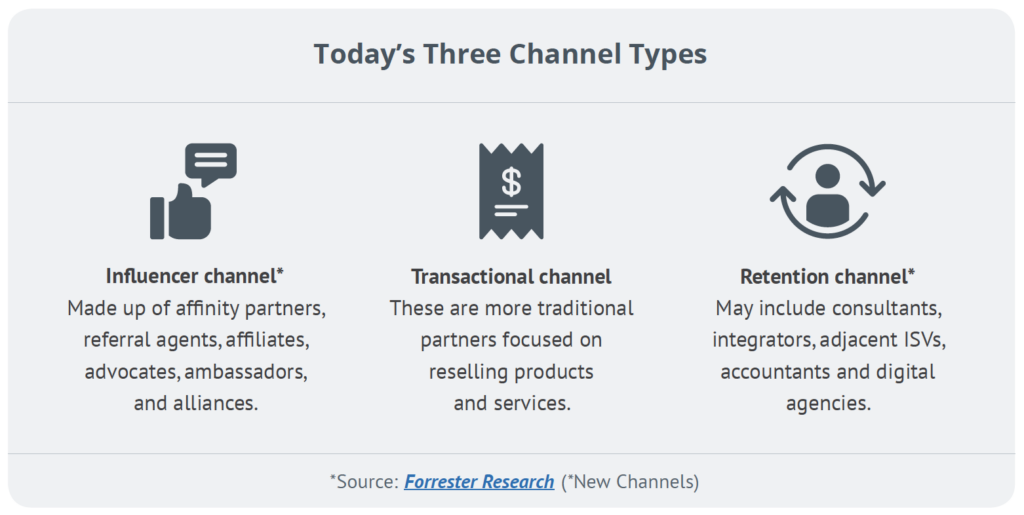9 Steps for Channel Success in an XaaS Economy
After engaging in a timely discussion about channel transformation with Robert Saxe of nVision Consulting Group at TSW Las Vegas, we turned the page on a new year and a new decade and we’re at it once again. Robert and I have decided to use our TSW presentation as a springboard for a new white paper offering channel leaders practical guidance for taking their XaaS strategies to the next level. I hope you’ll take a minute to read what we have to say – it’s a deep dive into what vendors need to do to evolve their go-to-market strategies during what looks like another year of significant change in the IT channel.
With demand for XaaS ever increasing and two-thirds of technology purchases now made through line of business buyers, vendors have reacted by developing cloud/software solutions that are consumed in new ways. As channel partners have struggled to understand their new role, these changes have disrupted the traditional value exchange between vendors, partners and their customers. The disruption has now reached an inflection point. According to Anne McClelland, TSIA vice president, XaaS channel optimization, to succeed in 2020 OEM vendors will need to find an effective framework for channel transformation in today’s XaaS world. Robert and I couldn’t agree more.
XaaS channel optimization is about the ‘as-a-service’ subscription offerings which are sold through, sold with or sold to a partner in order to meet a customer’s technology solution business requirements. Ideally optimizing the channel partners’ abilities and capabilities will both meet customers’ needs and drive reach and scale for vendor companies at the same time.”
– Anne McClelland, TSIA vice president, XaaS Channel Optimization
Partner Transformation in the New Economy
In previous white papers, Channel Impact has focused on Partner Success, an important new strategy that has come about as companies with indirect sales models seek to scale Customer Success (CS) with the help of partners. When pivoting to XaaS, tech OEMs must build upon their Partner Success strategies and further evolve their channel initiatives to guide partners into a new model of value exchange for XaaS transformation.
This evolution takes planning – the first step is to address critical changes to business and operating models before pursuing a go-to-market strategy. Channel marketers have been culturally trained to focus efforts on market acceleration. However, in the case of XaaS transformation, starting from a go-to-market perspective may not be the most optimal approach. Organizations first need clarity and definition around new offerings, new partner roles and requirements, and new customer engagement models so they are capable and prepared to compete in the XaaS market.
For example, as Forrester Principal Analyst Jay McBain notes, “with buyers spending 68% of their journey digitally before speaking with a salesperson (direct or partner) and an astounding 71% of them reaching vendor selection after a digital-only journey, brands are wising up to the importance of getting in front of customers early and often.” This is where an influencer channel may come in. At the same time, McBain says a retention channel is also emerging, with the transactional channel remaining a part of the channel ecosystem as well.

Transformation not only requires OEMs to think in new ways about the types of partners they align with, but to guide these partners to understand their value in the new subscription economy, how they engage customers and how they make the necessary cultural and organizational changes to successfully execute. These efforts will take considerable time to play out and pay off.
Vendors can’t expect partners to change in an instant, but they can provide partners with the strategies, framework, tools and resources so they can evolve incrementally – because the reality is, the old way of doing things simply won’t work anymore. The following is a condensed version of the first three steps in our nine-step framework for evolving your channel strategy across business, operational and go-to-market models. For the complete framework, download the white paper here.
First Steps – Build a Business Model Framework
- Get aligned – Vendors have to align their channel strategies to help partners make the transformation to XaaS. They need to provide transparency as to what their expectations are of partners moving forward. Partners need clarity about where they fit with respect to new cloud-based offers so they can determine their value and build a portfolio of add-on services. When vendors segment XaaS customers and identify market requirements, it helps partners gain a deep understanding of capacity requirements and the roles they will play relative to customer needs. Further, it provides partners an opportunity to combine their multi-cloud experience and alliances to deliver a highly specialized set of industry solutions. To be successful may require the reimagining of new channel strategies and programs in a way that many vendors simply haven’t yet considered.
- Make the tough choices – Realize that top partners in a transactional business model may not be top partners in the services economy. Evaluate partners based on the new skills and capabilities required to deliver on customer value propositions. What vertical expertise is needed? Which partners are ready, willing and able to make the shift? What’s the plan for partners that lack the right capabilities or are unwilling to evolve? Take the time to identify partners that have specific services, such as business consulting, integration, security and compliance, and that can drive customer adoption and success. Identify gaps in your partner community overall so that you know where to add more specialized expertise.
- Identify financial implications – Partners and vendors have different economic models – and what may be great for the vendor may look less appealing to their partners. Vendors need to evaluate the real-life financial implications transformation will have on their businesses. Identify the shared goals that make sense for both organizations and develop joint business plans to accelerate new capability development. Drive accountability within the channel by establishing KPIs or OKRs (objectives and key results). Manage OKRs with regular reviews and implement course-correction when necessary. The keys to success are understanding your partners’ economics and assisting them in realizing new growth opportunities.
The XaaS market is here and partners are looking to OEMs to help them drive change – not just changes around traditional program policies and incentive structures but real changes that empower them to align with the way business now gets done. If you need support in kick starting your efforts, let’s set up a time to talk. And if you’re headed to TSW San Diego 2020, schedule a visit with Robert and me. We plan to open up our XaaS Partner Starter Kit and share best practices on how to get up to speed quickly.
CLICK HERE to download the full white paper. We look forward to connecting with you soon!
Kristine Stewart
VP, Client Success
Channel Impact
kristine@channel-impact.com
Stay in the Know
Keep tabs on what’s happening in the channel and the impact it will have on the partner community by subscribing to Channel Impact communications.
Recent News
Search Buzz
Buzz Categories





